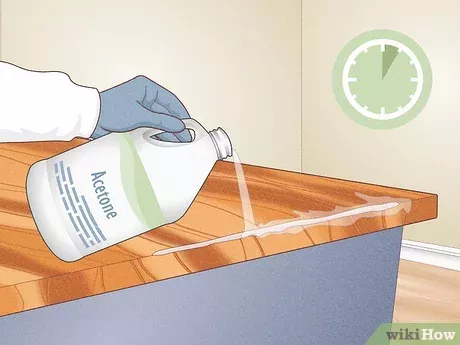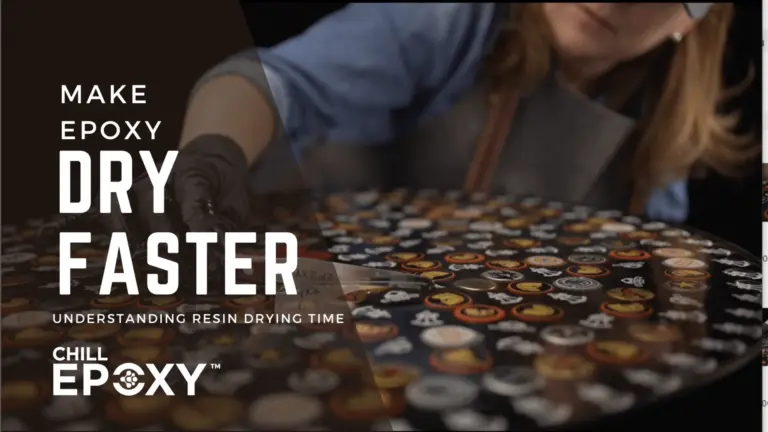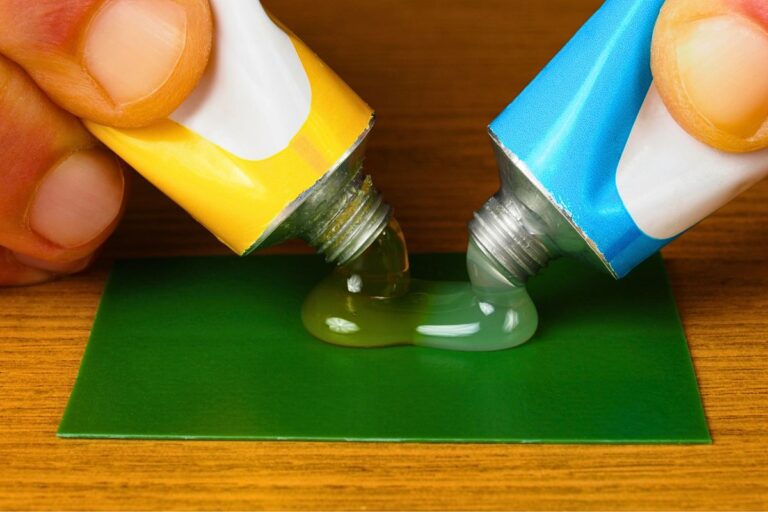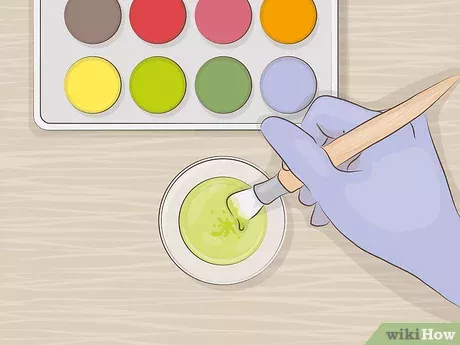Is Epoxy Resin Out of Style: Current Trends and Uses
Understanding Epoxy Resin
Epoxy resin is a versatile material with a wide range of applications in various industries. Let’s explore its uses and current market trends.
Applications of Epoxy Resin
Epoxy resin is renowned for its strong adhesive properties, excellent chemical resistance, and impressive durability. Its versatility makes it indispensable in many fields, including:
-
Paints & Coatings: Epoxy resin provides a tough, protective layer to surfaces, making it ideal for use in paints and coatings. It is often used in industrial and marine environments to guard against corrosion and wear (ChemAnalyst).
-
Electrical & Electronics: Due to its excellent insulating properties, epoxy resin is extensively used in the electrical and electronics industry. It helps in encapsulating and potting electronic components, ensuring their protection against moisture and other environmental factors.
-
Construction Industry: In construction, epoxy resin is used in flooring, adhesives, and composites. It provides a robust bonding solution for various building materials and is valued for its long-lasting performance (ScienceDirect).
-
Composite Materials: Epoxy resin is a critical component in composite materials, enhancing their mechanical strength and thermal stability. This makes it suitable for use in automotive, aerospace, and sports equipment.
-
Adhesives: The adhesive properties of epoxy resin are utilized in numerous industrial applications, where strong, permanent bonds are required.
Market Trends in Epoxy Resin
The demand for epoxy resin continues to grow, driven by its diverse applications across different industries. Here are some notable market trends:
-
Global Market Size: The global market for epoxy resin is projected to reach approximately 5000 thousand tonnes by 2030, boasting a compound annual growth rate (CAGR) of 4.16% (ChemAnalyst).
-
Composites Industry: The market size for epoxy resin in the global composites industry was $7.3 billion in 2023, with an anticipated growth rate of 6% annually over the next seven years (Lucintel).
| Application Area | Market Size (2023) | Growth Forecast (CAGR) |
|---|---|---|
| Overall Global Market | – | 4.16% |
| Composites Industry | $7.3 billion | 6% |
- Research and Development: Epoxy resin is continually being studied for various new applications, including electromagnetic wave absorption, flame retardancy, thermal conductivity improvement, and mechanical properties enhancement (ScienceDirect).
Considering its widespread use and ongoing advancements, epoxy resin remains a trendy and essential material. For more information on the properties and uses of epoxy resin, visit our article on what is epoxy resin.
To learn about alternatives and how epoxy resin compares to other materials, such as terrazzo, check out our section on Epoxy Resin vs. Terrazzo. For practical tips on working with epoxy resin, including mixing and application techniques, see how to use epoxy resin.
Epoxy Resin in Various Industries
Epoxy resin remains an essential material in various sectors due to its versatile properties and wide range of applications. Here, let’s explore its significant uses in different industries including paints and coatings, electrical and electronics, and the construction industry.
Uses in Paints & Coatings
Epoxy resin is widely used in the paints and coatings industry due to its excellent adhesion, chemical resistance, and durability. These properties make it ideal for both protective and decorative coatings. Epoxy coatings are commonly used for:
- Industrial Floors: Provides a tough and resistant surface that can withstand heavy traffic and harsh chemicals.
- Marine Coatings: Protects ships and underwater structures from corrosion.
- Protective Coatings: Used in pipelines, oil rigs, and other structures exposed to extreme conditions.
| Application | Benefits |
|---|---|
| Industrial Floors | High durability, chemical resistance |
| Marine Coatings | Corrosion protection |
| Protective Coatings | Resistance to extreme conditions |
For more on how epoxy resin is used in protective coatings, check out what is epoxy resin.
Applications in Electrical & Electronics
Epoxy resin is also prominent in the electrical and electronics industry due to its insulating properties and heat resistance. It’s used in:
- Encapsulation & Potting: Protects sensitive electronic components from moisture, dust, and mechanical damage.
- Printed Circuit Boards (PCBs): Provides a non-conductive layer that enhances the reliability of electronic assemblies.
- Transformers and Generators: Acts as an insulating material to prevent short circuits and other electrical faults.
| Application | Benefits |
|---|---|
| Encapsulation & Potting | Moisture protection, mechanical stability |
| PCBs | Enhanced reliability |
| Transformers & Generators | Insulation, fault prevention |
If you’re curious about the safety aspects, read is epoxy resin toxic.
Role in Construction Industry
In construction, epoxy resin plays a vital role due to its strong adhesive properties and versatility. It is commonly employed in:
- Flooring: Offers a seamless, easy-to-clean surface that is resistant to wear and chemicals.
- Adhesives: Bonds various materials like concrete, wood, and metal for structural integrity.
- Grouting and Sealing: Provides durable and watertight seals for tiles and countertops.
| Application | Benefits |
|---|---|
| Flooring | Seamless, durable surface |
| Adhesives | Strong material bonding |
| Grouting | Durable, watertight seals |
For those DIY enthusiasts, you can find guides on how to use epoxy resin and how to remove epoxy resin to help with your projects.
The epoxy resin market is expected to continue growing. According to ChemAnalyst, the global market size is forecasted to reach approximately 5000 thousand tonnes by 2030, with a CAGR of 4.16%. The increased use in these industries underlines epoxy resin’s continuing significance and popularity. Curious about the eco-friendly side of resin furniture? Check out our section on the sustainability of resin furniture.
Epoxy Resin vs. Terrazzo
Historical Background of Terrazzo
Terrazzo is a remarkable material that boasts a rich history dating back to ancient Egypt and Rome. Venetian workers during the 15th century were instrumental in developing the terrazzo we know today. They employed discarded marble fragments to create stunning flooring, a technique that evolved from Rome’s opus signinum (Startracktours).
Throughout history, terrazzo has been used in significant public structures. Ancient Romans utilized it for building baths and villas. During the Renaissance and Baroque periods, it graced the floors of churches and palaces. The 19th and 20th centuries saw its use in public buildings and hospitals, symbolizing its lasting appeal and durability (Startracktours). A notable modern-day example is the Hollywood Walk of Fame, which features over 2,600 stars embedded in terrazzo, showcasing its blend of durability and cultural significance.
Evolution of Terrazzo with Epoxy Resin
The versatility of terrazzo has been significantly enhanced by the introduction of epoxy resin binders, popularizing the material beyond traditional flooring. Combining epoxy resin with terrazzo has led to innovative applications, like walls, countertops, and intricate decorative surfaces (Startracktours).
Epoxy resin binds the particles more effectively than traditional cement, resulting in a more flexible and crack-resistant surface. This innovation has reinvigorated terrazzo’s popularity, allowing designers to experiment with a wider range of colors and patterns.
| Feature | Cement-based Terrazzo | Epoxy Resin Terrazzo |
|---|---|---|
| Composition | Cement and marble or glass chips | Epoxy resin and marble or glass chips |
| Flexibility | Less flexible, prone to cracking | Highly flexible, minimal cracking |
| Range of Colors | Limited | Extensive |
| Applications | Mainly floors | Floors, walls, countertops |
| Durability | High | Very high |
Interestingly, the combination of epoxy resin has not only expanded the aesthetics of terrazzo but also its applications within home renovation projects. Whether one is creating a luxurious countertop or a visually stunning floor, the use of epoxy terrazzo provides enhanced durability and design flexibility.
For more information on epoxy resin, such as what is epoxy resin or how to add color pigment to epoxy resin, our internal links offer comprehensive guides and tips.
The Appeal of Resin Furniture
Exploring the allure of resin furniture, you’ll discover numerous reasons why this material is gaining traction in the home renovation world. Resin furniture offers unique characteristics and several advantages over traditional furniture.
Unique Characteristics of Resin Furniture
Resin furniture stands out due to its vibrant colors, eye-catching designs, and unique shapes. It provides an artistic flair to any space, making it a popular choice for both indoor and outdoor use. The use of synthetic resin in the production process allows for intricate and customizable designs, ensuring each piece is one-of-a-kind.
| Characteristic | Description |
|---|---|
| Colors | Vibrant and diverse color options |
| Designs | Eye-catching and customizable |
| Shapes | Intricate and unique |
Source: Verified Market Research
Another significant aspect is its eco-friendly production. Resin furniture utilizes sustainable materials, which reduces deforestation and environmental impact. For more on the eco-friendly properties, visit our section on sustainability of resin furniture.
Advantages Over Traditional Furniture
One of the main advantages of resin furniture is its durability. Unlike traditional wooden furniture, resin furniture is resistant to weather elements, making it ideal for outdoor use. It doesn’t require the same level of care and maintenance as wood, which often needs periodic treatment and repainting.
| Feature | Resin Furniture | Traditional Furniture |
|---|---|---|
| Maintenance | Low | High |
| Durability | High | Variable |
| Weather Resistance | Excellent | Moderate |
Resin furniture is also an affordable option. The simple manufacturing process keeps costs low, while still providing high quality and long-lasting products. Its lightweight nature makes it easy to move and rearrange within your space, adding to its practicality. Learn more about how to use epoxy resin in creating these versatile pieces.
Lastly, resin furniture plays a significant role in reducing environmental waste. Since it doesn’t rely heavily on wood, it helps mitigate the need for deforestation, offering a sustainable solution without compromising on quality (Verified Market Research).
For a detailed guide on maintaining and enhancing the appearance of your resin furniture, check out our guide on how to polish epoxy resin.
Sustainability of Resin Furniture
Eco-Friendly Properties of Resin Furniture
Resin furniture is gaining popularity among home renovators for its striking appearance and eco-friendly properties. One of the biggest advantages of resin furniture is its role in reducing deforestation. The resin used in furniture production is primarily synthetic, offering an eco-friendly option for those looking to minimize their environmental footprint (Verified Market Research).
Resin furniture, particularly for outdoor use, is not only beautiful but also practical. Unlike wooden furniture, it does not require the same level of maintenance or treatment, such as repainting or weatherproofing. This ultimately translates to fewer chemicals being used and less waste produced over the furniture’s lifespan.
Another benefit of using resin in furniture is its durability. Resin furniture is known for its longevity and resistance to wear and tear, which means it does not need to be replaced as frequently as other types of furniture. This further contributes to its sustainability, as fewer resources are needed for production and disposal.
Impact on Deforestation and Environment
Choosing resin furniture can significantly impact deforestation and the environment. Traditional furniture manufacturing often requires the harvesting of trees, contributing to deforestation and loss of natural habitats. By opting for resin-based furniture, you support the reduction of tree-cutting activities, aligning with eco-friendly and sustainable practices.
Producing resin furniture helps to mitigate environmental waste, offering a sustainable solution for creating high-quality, long-lasting pieces. The use of synthetic resin reduces the need for natural wood, allowing forests to thrive and reducing the strain on natural resources. This eco-friendly alternative not only preserves forests but also supports biodiversity and helps combat climate change.
| Material Used | Trees Needed | Durability (Years) | Maintenance Requirements |
|---|---|---|---|
| Wood | High | 10-15 | High (repainting, treatments) |
| Resin | Low | 20-25 | Low (minimal treatment) |
By choosing resin furniture, you contribute to a more sustainable future. For more information on resin and its various applications, check out our articles on what is epoxy resin and how to use epoxy resin on wood. If you are concerned about the environmental impact and safety of resin, you can also explore topics like is epoxy resin toxic and how to clean epoxy resin.
Resin furniture not only provides an eco-friendly and sustainable alternative to traditional wooden furniture but also offers practical benefits that cater to modern living needs.
Growth and Outlook of Resin Furniture Market
Forecasted Market Size
The resin furniture market is on an upward trajectory with a robust growth rate. By 2030, the market is anticipated to reach USD 29.15 Billion, witnessing a CAGR of 4.85% over the forecast period from 2023 to 2030. This growth is fueled by a variety of factors including increased disposable incomes and the expanding hospitality and housing sectors.
| Year | Market Size (USD Billion) | CAGR (%) |
|---|---|---|
| 2023 | 20.85 | 4.85 |
| 2025 | 25.14 | 4.85 |
| 2030 | 29.15 | 4.85 |
Figures courtesy of Verified Market Research.
Factors Driving Market Growth
Several factors are driving the growth of the resin furniture market:
- Rising Disposable Incomes: With higher disposable incomes, consumers are more willing to invest in premium and luxurious furniture options, including resin-based furniture.
- Popularity of Hospitality and Housing Sectors: The increase in new constructions and renovations in the hospitality and housing sectors is boosting the demand for stylish and durable furniture.
- Advances in Commercial Construction: Innovations and advances in the commercial construction industry have led to more demand for unique and customizable furniture options.
- Global Demand for Premium & Luxury Furniture: As a result of globalization, there is an increased appetite for high-quality, aesthetically pleasing furniture across the world.
Resin furniture’s durability, unique aesthetics, and adaptability make it a compelling choice for many consumers. The market outlook remains optimistic with factors such as elegance, eco-friendliness, and robust designs significantly contributing to its sustained growth.
For more insights on epoxy resin, check out our articles on what is epoxy resin and how to use epoxy resin. If you’re interested in exploring how resin furniture contributes to sustainability, visit our section on the eco-friendly properties of resin furniture.







